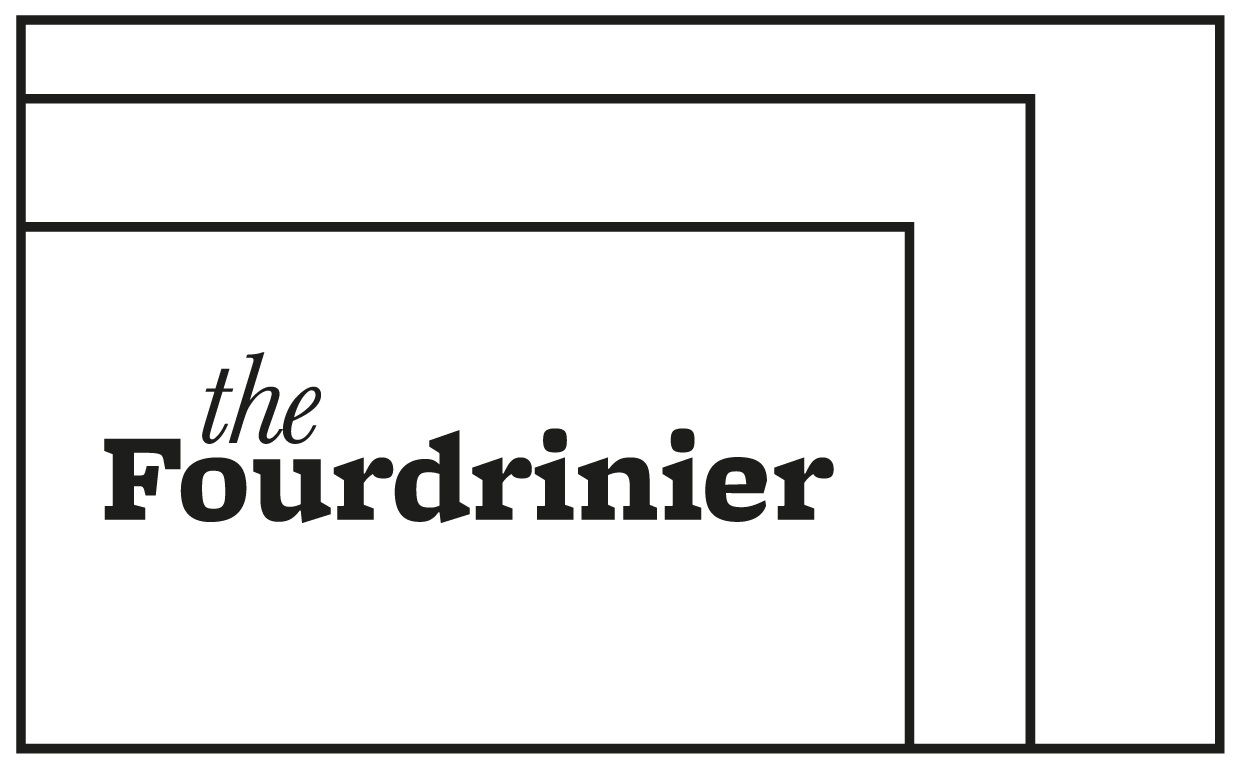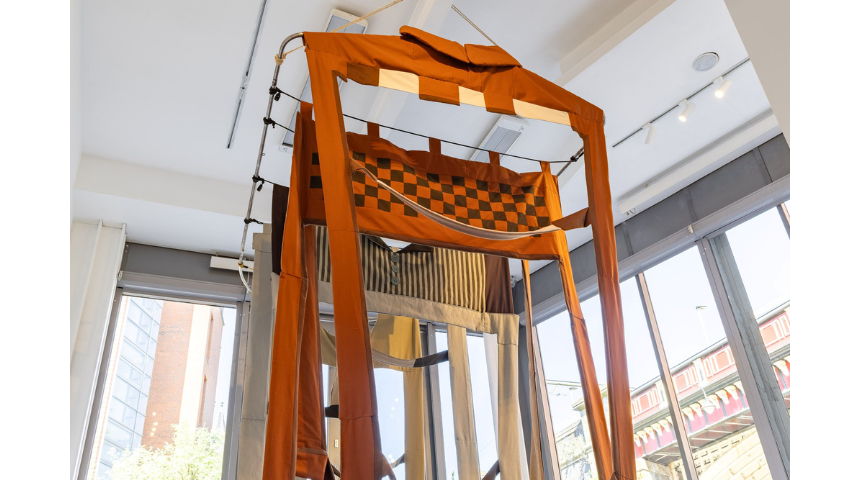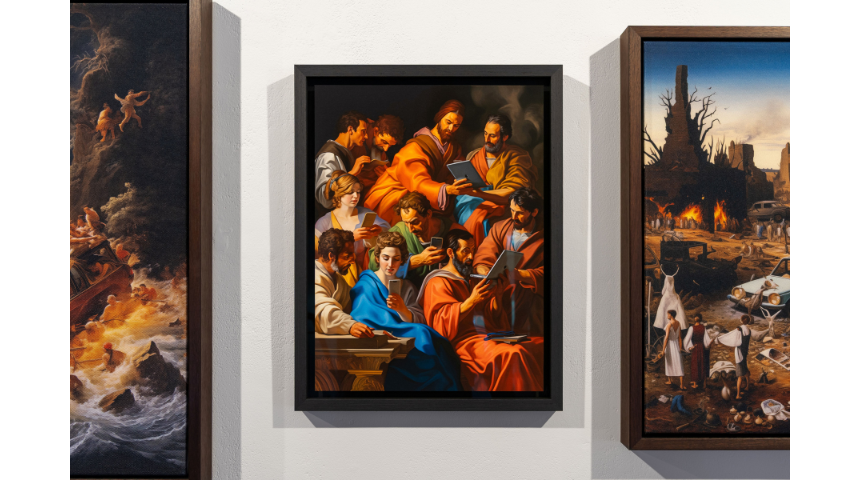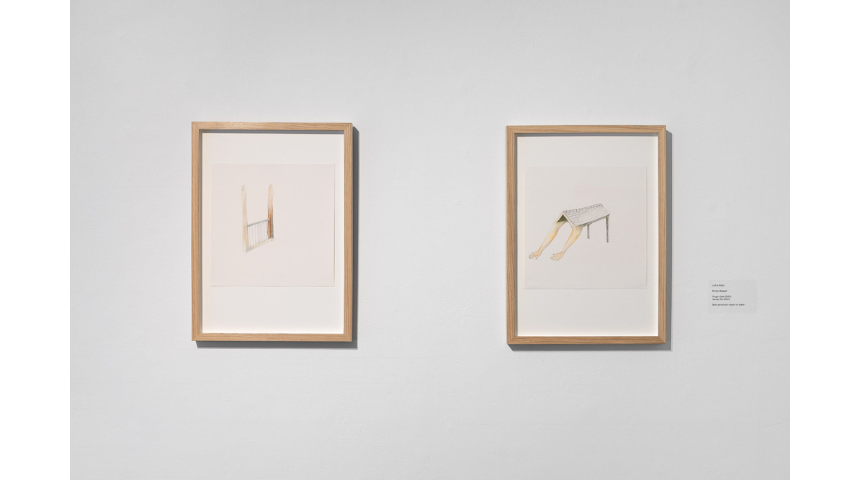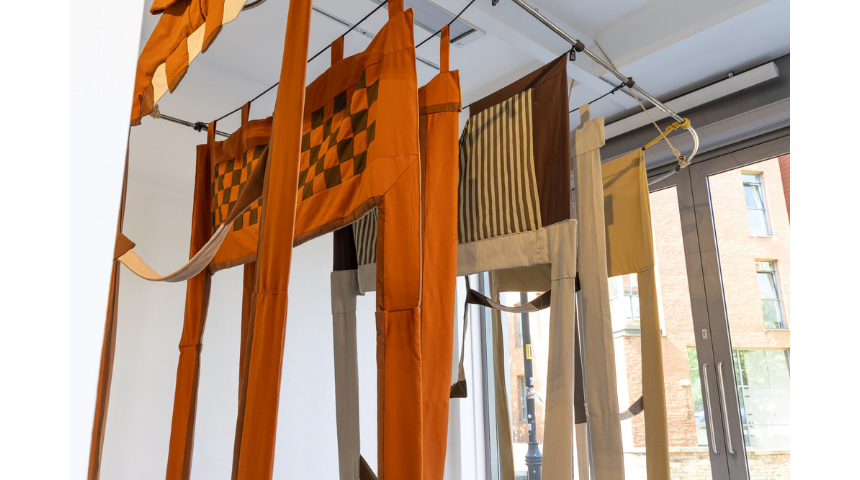REVIEW Jul 2025 ‘Energy House 2.0: Mishka Henner and Emily Speed’
Simal Rafique
Emily Speed Floorplans (2025) Photographed by Jules Lister
Writer Simal Rafique reviews Castlefield Gallery’s latest exhibition featuring artists Mishka Henner and Liverpool-based Emily Speed, on view until 20th July 2025. The project was part funded by the Friends of Energy House 2.0 Community, part by the University of Salford Art Collection, and also by Open Eye Gallery, Liverpool and Castlefield Gallery, Manchester. Commissioned over the duration of 18 months, the two artists-in-residence at the University of Salford have generated multimedia artworks for ‘Energy House 2.0: Mishka Henner and Emily Speed’ that focus on climate change, artificial intelligence and a burgeoning housing crisis under extreme weather conditions. Energy House 2.0 itself is a cutting-edge, £16m research facility and warehouse containing two full-scale detached houses that are capable of artificially recreating harsh environmental conditions including wind, rain and snow. The result is an exhilarating interdisciplinary dialogue engaging with a project that researches the future construction of carbon-neutral homes by melding together architecture and interior design with science and sustainable digital technologies.
https://www.castlefieldgallery.co.uk/event/energy-house-2-0-mishka-henner-and-emily-speed/
Gentrification is upon us. High-rise residential buildings, Instagramable cafes and pilates studios are cropping up constantly in Manchester, embedding into the urban fabric of a vivacious metropolis which is itself becoming a miniaturised London at the expense of local residents and their quintessential Northern culture. Recently, a huge fire at Hotspur Press building, a historic derelict mill from the Industrial era that was due to be converted into a 37-storey accommodation block, has shocked fellow Mancunians. On the subject of shelter and habitation, the net-zero showroom houses at Energy House 2.0 form a laboratory to test the performance of buildings and building materials in all aspects of energy use. What will the architecture of our post-industrial Cottonopolis look like? Where will families and friends reside? Artists Mishka Henner and Emily Speed voice their approaches to an alternative future at the latest show in Castlefield Gallery.
In the first room, Belgian-born Mishka Henner’s artworks comprise of four AI-generated prints of Old Master paintings that are reimagined and layered over with imagery of current affairs and technology, alongside three sheets of cartridge paper with musical staves entitled The Conductor: Three Minutes of Thunder (2025). The apocalyptic world of Hieronymus Bosch in The Scrapyard of Unearthly Ambition (2023) and the Romantic sublime in The Car Wreck (2023) typify an inclination in contemporary art to appropriate and recycle the art of the past through pastiche. When I attempt to photograph The Curators (2023), a Titianesque group portrait littered with iPhones, MacBooks and iPads, my phone camera automatically detects the faces in the cluster of saints-turned-art-curators. The face – once a marker of a unique biological identity and what Italian philosopher Giorgio Agamben termed the site of the exposition of Being – is rendered computationally into a biometric thumbprint. Clearly, The Curators illustrates the erosion of social relations under late capitalism, with a growing attachment to digital media signifying the annihilation of meaningful conversation and intellectualism.
Mishka Henner, left to right: The Car Wreck (2023), The Curators (2023), The Scrapyard of Unearthly Ambition (2023). Photographed by Jules Lister
Discussing the inspiration behind these uncanny sublimation prints, a digital process which involves heat, pressure and time to transfer dye onto a substrate, the artist notes in a video filmed by Jules Lister at the start of the exhibition: ‘I was really interested in what it would be like to have a haunted Energy House. The two houses are quite generic: they've been decorated in a non-offensive way. I wanted these reminders of the outside world because the Energy House is quite sheltered. I mean, literally, not only are you in a house but you're in a house in a warehouse, so the outside actually seems very far away.’ In spite of our shared stance, Henner’s spectral diagnosis of climate change is dissatisfying to me; his reliance on AI to generate a Boschian iconography of environmental collapse forfeits the ecocriticality of his practice.
My eyes (and ears) are drawn more towards his sound installation in the lower gallery downstairs, where The Conductor: A Live Score converts data from the Blitzortung website, a real-time index of lightning and thunder strikes registered by 10,000 sensors globally. Using custom software and coding that mirrors the research undertaken by Professor Richard Fitton and the team of scientists at Energy House, The Conductor registers the constancy of these strikes into a percussive sonic score of events that booms and clangs. A digital screen in a curtained pitch-black chamber flashes with white arrows recorded on a musical stave, enabling viewers to relate the cacophony with melodious imagery.
Outside, a live Mercator-projection map pinpoints the geographical site of the lightning strikes with bullseye concentric circles of red that evoke planetary danger and catastrophe. I felt compelled to act in response to the data and inputs. At the time of my morning visit, swathes of Mexico and Greece competed for attention in a thunderous rally. Ecosystems are evidently more vulnerable in hot, humid regions where the intensity and frequency of thunderstorms is exacerbated by global warming and an increase in convective clouds. The Conductor is thus a pertinent response to the Energy House Labs residency, since it prioritises the design of net zero buildings according to the energy-efficient and carbon-reducing regulations of Future Homes Standard.
Mishka Henner The Conductor – A Live Score (2025) Photographed by Jules Lister
Emily Speed’s multimedia installations and pencil-on-paper studies reflect her investment in bodies, fashion, gender and architecture. The focus of her artist residency marks a curatorial departure from the preoccupation with climate change and digital technologies, perhaps recommending solutions to Henner’s authoritative but disinterested observations. Her central commission Floorplans (2025) is a coat hanger-like suspension of loopy fabric tapestries in rusty orange and cream shades, some hanging with stripes and checkered patterns from inherited and donated fabric, alongside scraps of new BCI cotton (Better Cotton Initiative, a global project supporting sustainable cotton farming practices), to fit the scale of a real house. Oversized buttons and collars allude to an absent body that ought to wear these sculptural outfits.
Walking around these drooping “sleeves” and gaping holes is a perplexing experience; it ought to resemble a 1:4 scale house but it looks like a gigantic heap of a wardrobe hung on a conveyor belt of a rack on the roof. The result of Floorplans, I think at least, is a critique of the cancerous growth of the fast-fashion industry and its reliance on cheap labour, single-use plastic and exploitative methods. Where Speed differs from Henner’s AI-generated commentary is in her total embrace of sustainable art practices, her recycled fabrics appear to remedy the culture of high-street and online hyperconsumerism. In Tightening (2025), one of two works relating to fingers, this one a glazed ceramic hook, Speed has constructed a belt using Oleaplex, a leather made from waste byproducts in the olive industry.
Less noticeable to my gaze is Good Girl (2025), a plaster and goat hair finger with a pleated skirt, offering a counterpoint to the monumental scale of Floorplans. At first, I think the installation is a cleaning mop for the gallery. Situated obscurely in a corner of the glass windowpane, the erect finger performs a sexualised role in the domestic space. In fact, creepy fingers are a reoccurrence in Speed’s oeuvre, gesturing at the manual process of her artistic production and underscoring the tactile materiality of her installations. Fingers are an apt metaphor for the regular actions of pointing, touching, pouring, switch-flipping, door-pushing and phone-scrolling that occur within the home. This manual labour is coded feminine in the original display at Energy House, where the flesh-pink finger synonymises with the shiny, sterile surfaces of the unused kitchen and the nostalgic fantasy of a traditional family unit: the nuclear family that relies upon the thankless job of a “double shift” and heteronormative relations. Her focus on gender and interior design opens up to the fantasies of the domestic space as sites for leisure and transformative rest enjoyed by family members, except perhaps by mothers and wives.
Emily Speed, left: Finger Gate (2023) right: Sturdy Girl (2023) Photographed by Jules Lister
Of late, Emily Speed is especially interested in fitted, 1920s-style kitchens as commodified spaces of labour in glossy interior design magazines. Her disdain for this is apparent in how meticulously she disrupts the commercial blandness of Energy House’s decoration style with an amputated body part that, although easily overlooked by imagined household members, is at once unsettling and adorable to gallery visitors. On are.na (https://www.are.na/emily-speed/house-energy), Speed’s research boards for the residency indicate some of the textual sources that inform this work. One shared pin includes a quotation from American architect Frank Lloyd Wright in 1963: ‘Some women want things on ball-bearings, some don’t want to bend over: they like to stand up while they work: for them we put everything up high: ovens in the wall, etc. Women who do not mind bending over like things more compact; they do not want to waste their substance on going to and fro.’ Good Girl certainly aligns with the consumer-archetype who prefers more compact furniture, since she herself is a diminutive creature.
Emily Speed’s sketches are also lighter and less assertive than the way that Henner presents his residency research. There is a reticence to the delicate shading of Speed’s pencil and crayon aesthetic, where surrealist fingers and hands fuse into architectural forms. Sturdy Girl (2023) depicts a pair of hands crawling and stretching out of a cocoon of a house’s roof; Finger Gate (2023) is a gate made of two wood-like fingers, a metaphor for containment and a demarcation of two spatial realms. Her artworks often rely on a level of deception. In her own words, she creates ‘things that are seemingly friendly or useful at first glance, like hooks and coverings, but actually they’re uncomfortable.’
Knitted together, the joint exhibition at Castlefield Gallery is a showroom glimpse of what homes in Britain may look like in the future, disordered by what Henner calls the ‘hauntings’ of climate change and filled with Speed’s depiction of tiny, fragmented bodies that are inseparable from the post-industrial buildings that shelter them. After July, the Energy House commissions will enter the University of Salford’s official art collection ‘for the benefit of future generations’ and I dread to see how these artworks will operate as a time-capsule resource in conjunction with how UK residents once envisaged the future of Manchester and national housing back in 2025.
Emily Speed Floorplans (2025) Photographed by Jules Lister
University of Salford Art Collection share the Fourdrinier’s passion for shining a light on contemporary art in the North and fostering new writing talent, and have paid for this review.
The views expressed in this review are solely those of the author.
